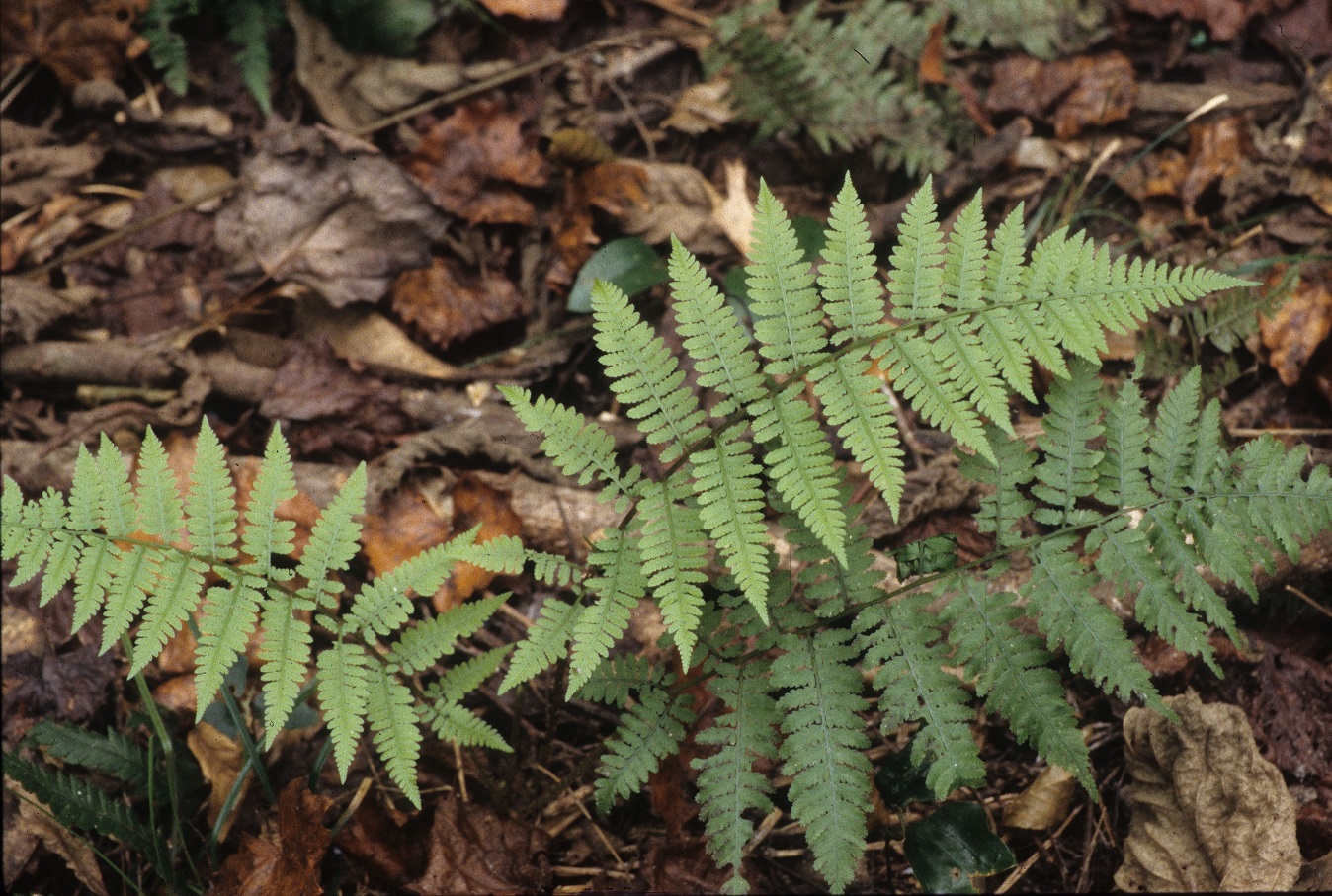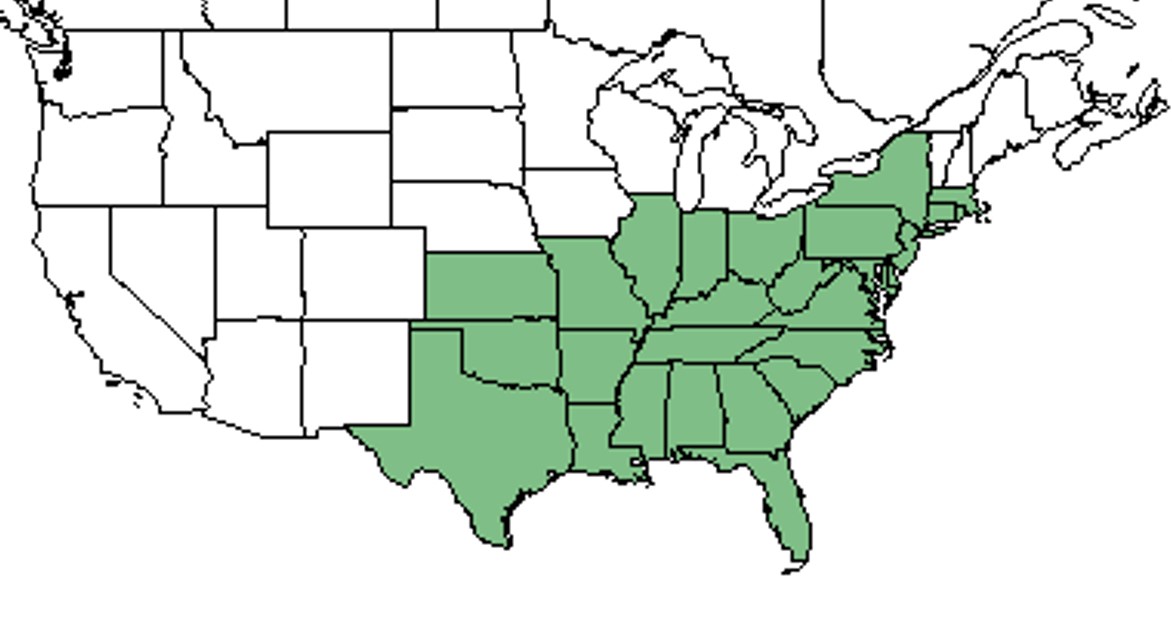Athyrium asplenioides
| Athyrium asplenioides | |
|---|---|

| |
| Athyrium asplenioides taken by Gil Nelson | |
| Scientific classification | |
| Kingdom: | Plantae |
| Division: | Tracheophyta |
| Class: | Polypodiopsida |
| Order: | Polypodiales |
| Family: | Athyriacae (Woodsiaceae) |
| Genus: | Athyrium |
| Species: | A. asplenioides |
| Binomial name | |
| Athyrium asplenioides (Michaux) A.A. Eaton | |

| |
| Natural range of Athyrium asplenioides from USDA NRCS Plants Database. | |
Common name: Southern lady fern
Contents
Taxonomic notes
Synonyms: Athyrium filix-femina (Linnaeus) Roth ex Mertens var. asplenioides (Michaux) Farwell.; Athyrium filix-femnia ssp. asplenioides (Michaux) Hultén[1]
Varieties: none[1]
Kelloff (2005) explains the taxonomic differences of Athyrium filix-femina with overlapping ranges in North America and on other continents.[2] According to Kelloff (2005), the two eastern North American Athyrium species, A. angustum and A. asplenioides, both have characteristics that separate them into their own taxa, such as spore color and surface texture.[2]
As stated by Edwin Bridges (02/18/2016), "If you believe that there is only one widespread species in multiple continents, then the earliest name is Athyrium filix-femina, so that is the name you would use. If instead, you believe that the preponderance of the evidence indicates that there are several species in this group, then you split it into several different species, and of those, the narrowly defined A. filix-femina (what some call A. filix-femina var. filix-femina) is not in North America."
Description
A description of Athyrium asplenioides is provided in The Flora of North America.
Distribution
Ecology
Habitat
A. asplenioides can be found along river floodplains, near the bottom of a ravine, on the ravine slope, in lowland forests, and in frequently burned pinelands.[3] It occurs in shady to deep-shady areas with moist loamy sand soil type and that are seepage and bogyy-like.[3] Uncommonly, it is found in disturbed areas such as old cowpens.[3]
Associated species include Dryopteris ludovicinana, Thelypteris sp., Thelypteris hexagonoptera, Polystichum acrostichoides, Illicium, Ilex, Magnolia, Quercus, Botrychium dissectum, Woodwardia virginica, Carya aquatic, and Ligustrum sinense.[3]
Phenology
In June, it has been seen that there are mature fronds that are erect with pinnae appressed-ascending along the rachis. And in October, it has been observed that there are sterile and fertile fronds together in the same batch of foliage.[3]
Conservation, cultivation, and restoration
Cultural use
Photo Gallery
References and notes
- ↑ 1.0 1.1 Weakley, A.S. 2020. Flora of the Southeastern United States. Edition of 20 October 2020. University of North Carolina at Chapel Hill, Chapel Hill, North Carolina.
- ↑ 2.0 2.1 Kelloff, Carol L. (2005). "The Two Taxa of the Eastern North American Lady Fern, Athyrium Filix-femina." Long Island Botanical Society - The Quarterly Newsletter 15.2: 9-14. Web. 23 Feb. 2016.
- ↑ 3.0 3.1 3.2 3.3 3.4 Florida State University Robert K. Godfrey Herbarium database. URL: http://herbarium.bio.fsu.edu. Last accessed: February 2016. Collectors: Loran C. Anderson, Lisa Keppner, Robert K. Godfrey, R.F. Doren, J. M. Kane, Roy Komarek, Angus Gholson, Wilson Baker, Travis MacClendon, Karen MacClendon, Boothes, John B. Nelson, Velma Matthews, Richard Carter, Samuel B. Jones, Harriett DiGioia, Sidney McDaniel, Kurt E. Blum, D.P. Whittier, H. Wagner, William Reese, Paul Redfearn, Annie Schmidt, C. J. Hansen, C. M. Morton, Michael Cousens, and Sara J. Noyes. States and Counties: Alabama: Lee. Florida: Calhoun, Clay, Columbia, Escambia, Gadsden, Jackson, Jefferson, Leon, Liberty, Union, Walton, Washington. Georgia: Grady, Murray, Thomas. Louisiana: Tangipahoa. South Carolina: Beaufort, Newberry, Orangeburg. Tennessee: Coffee. Mississippi: Kemper.